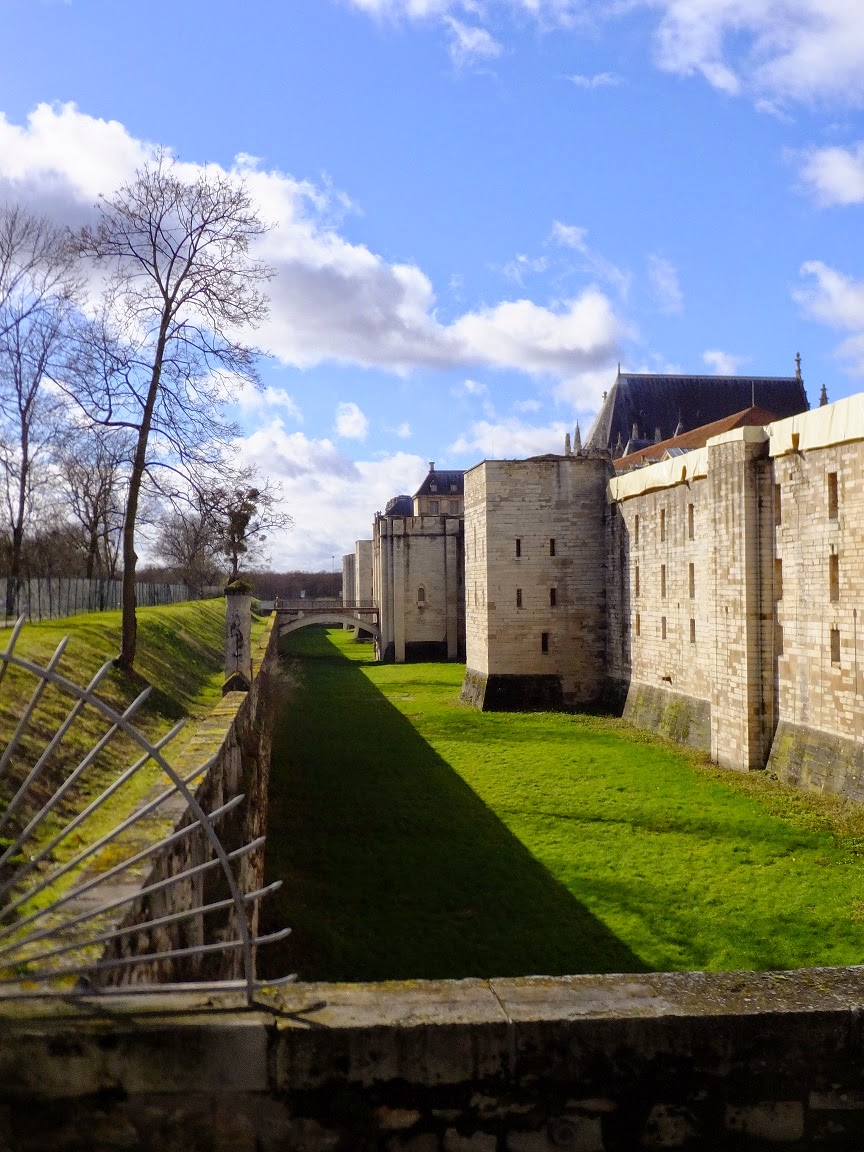 |
| Parc Floral de Paris in Bois de Vincennes |
Any excuse to visit Paris and this time, my excuse is a chance to meet up with my sister before she heads back to snowy New England after a month studying French on the Côte d'Azur. I pounce on the great winter train fares and score cheap seats on the TGV. We're staying with friends on the eastern outskirts of Paris, which provides another good excuse: visits to Château de Vincennes and Bois de Vincennes.
Trees may not be the first thing that pops into one's head when thinking of Paris, but with more than 400 parks and gardens, the city is the most wooded capital in Europe. And Bois de Vincennes is the largest park in the city. Its 2,459 acres occupy 10 percent of the total area of Paris.
 |
| Residents of Parc Floral de Paris |
Once a royal hunting ground, the public park was established under Emperor Napoleon III in the mid-1800s. The park contains the Château de Vincennes, four man-made lakes, a zoo, an arboretum, horse- and bike-racing tracks, and a floral garden.
 |
| Signs of spring in Parc Floral de Paris |
The sun is shining but la météo has predicted rain by noon, we decide to start our visit at Parc Floral. It's late winter, so there aren't many flowers, but we see some signs of spring as we walk along the paths.
 |
| Parc Floral de Paris in Bois de Vincennes |
 |
| A theater in Parc Floral de Paris |
 |
One of several educational venues
in Parc Floral de Paris in Bois |
 |
| Hanging out in Parc Floral de Paris in Bois de Vincennes |
The skies are threatening, so we head to the nearby castle. I had checked ahead of time to make sure the château doesn't close during lunchtime (always a possibility), but luckily we don't dally, because the royal chapel does take a lunch break (?) and we are able to slip in just before.
 |
| The moat at Château de Vincennes |
Dating back to the Middle Ages, Château de Vincennes is the tallest medieval keep in Europe. The castle was originally a hunting lodge, with the surrounding forest providing the ideal location. A royal residence for kings from Phillip II to Louis XIV, even Charles de Gaulle considered the site for a possible seat of the French Presidency. After Louis XIV moved out to the suburbs of Versailles in 1862, the château lost its status as a royal home. Around this time, the keep served as a prison for "high-born prisoners," (according to France's official
website).
Some of the more illustrious "guests" imprisoned at Vincennes include: Jean-François Paul de Gondi, cardinal of Retz; Nicolas Fouquet, Viscount of Vaux/Marquis of Belle-Isle; Louis II of Bourbon, Prince of Condé; Donatien Alphonse François, Marquis de Sade; Denis Diderot, writer/philosopher; and Honoré Gabriel Riqueti, Count of Mirabeau.
 |
Statue of Saint Louis, aka Louis IX,
onetime Vincennes resident |
 |
Sainte-Chapelle, the royal chapel built by Saint Louis
to house the relics of Christ's Passion (the Crown of Thorns,
a fragment of the Holly Cross, the sponge and the spear).*
*I obviously am quoting the visitor's guide. |
 |
| Sainte-Chapelle |
On the day of our visit, the château grounds seem to be one large construction site. Much of this is routine restoration and gardening, but some is also likely to be part of vast archaeological digs. The visitor's guide tells of the discoveries at Vincennes since 1994:
"The restoration of the keep has revealed the existence of its original décor and the systematic use of iron to consolidate its structure. Digs on the site have revealed an extensive hydraulic network and shown the various periods in the manor's construction. This extensive restoration work was vital if the Castle of Vincennes, a key stage in the history of art and one of Europe's greatest Medieval castles, was to go on standing the test of time."
 |
| Murals painted by prisoners at Vincennes |
.
 |
| The Beck sisters at Château de Vincennes |


















































